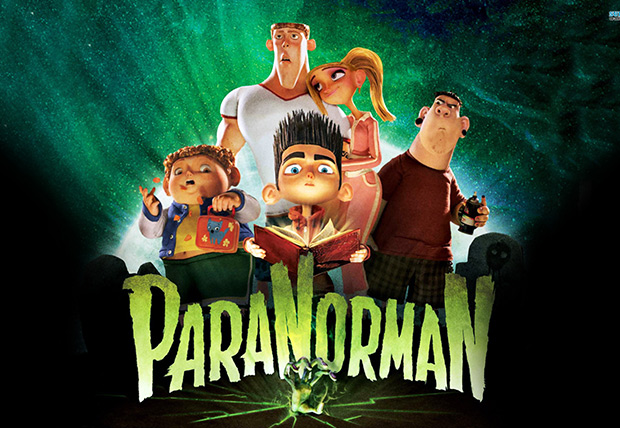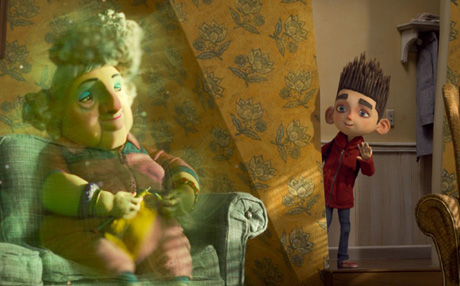What do you get when you mix monster kid nostalgia with an appreciation for 1980s horror, an understanding of being an ostracized kid, and the use of stop-motion animation artistry? The answer: ParaNorman, a wonderful film that opened this weekend and which, in this reviewer’s estimation, lives up to the many positive reviews it has thus far received.
ParaNorman tells the story of Norman, a young boy living in Blithe Hollow in Massachusetts, a town that bears a close resemblance to Salem in that it has the stigma of a witch’s execution. As local legend has it, the town is subject to a witch’s curse, the result of a group of town leaders who, hundreds of years previously, found a little girl guilty and worthy of death because of her ability to communicate with the dead. It just so happens that this is the same gift that Norman has, and he finds himself surrounded by skeptics and bullies, within his family as well as in school. As a result, he is largely a loner who takes refuge in his love for zombie movies and horror, and the relationships he forms with the talkative undead trapped in this realm do to sudden tragic death or a death complicated by unfinished business. Norman comes to learn that it is up to him to save his town from the curse, but its nature is not what it seems. Norman rises to his personal challenge, and in so doing gains the respect of his family and townspeople along the way.
ParaNorman is an ambitious technical work. For those unfamiliar with the stop-motion animation process, it involves the use of jointed figures that are moved by fractions of an inch at at time so that when the film plays back at 24 frames per second, the illusion of life and emotion takes place on screen. This film was produced by those who previously brought us Coraline, and the animation work in this is far more extensive, both in terms of the number of figures and effects that are brought to life. According to production information available on the Internet, one scene alone, the rising of the old town judges from their graves, took a year to animate. The animator’s devotion to their craft, and to this amazing art form, play out in the fluid motion onscreen.
Like Coraline, ParaNorman is a dark fantasy horror film. Hotel Transylvania, a computer animated film, and Frankenweenie, another stop-motion animation work, are due out later this year in September and October respectively, but they look to be lighter fare with more comedic elements than ParaNorman offers. Instead, this film focuses more on what it means to be a kid who is different, and as a result suffers from those around him, even in those places where differences should fade in significance, in the confines of the family. Norman is constantly harassed by a bully at school, but the bullying continues at the hands of his less-than-understanding father and sister who refuse to consider the possibility that his claims to see the deceased may be true. In this there are lessons for adults and children in our culture where bullying has become something of a national issue with the suicides of kids and teens.
Beyond this ParaNorman also has lessons in regards to other areas of marginalization as well. At one point near the end of the film Norman’s mother tries to persuade his father to be more open to his son’s claims. She says, “Not believing in the afterlife is like not believing in astrology.” The comment is humorous, and on the one hand the audience might be tempted to casually dismiss both concepts as the product of continued superstition, and yet survey data indicates that a sizable number of Americans believe in life after death, as well as various forms of paranormal belief. In the case of Norman, he claims to be able to see and converse with the dead, and this brings to mind any number of adults as well as children in the real world who also lay claim to this ability. ParaNorman is a piece of fiction, but one which overlaps with the real world in its concerns over the possibility of postmortem communication and psychic ability.
Finally, although ParaNorman presents a story that invokes fairytale and horror conceptions of witchcraft and related persecution, nevertheless this too overlaps with the real world as the unfortunate murder of a young girl accused of witchcraft in Blithe Hollow parallels unfortunate events in Salem. There the infamous Salem Witch Trials in 1692 resulted in the prosecution and execution of innocent people, and American history continues its misunderstanding and misrepresentation of real witches and other pagans. In our time where they and others, whether Muslims or Sikhs, are the victims of harassment and violence as a result of being different from the mainstream, ParaNorman has an important message.








There are no responses yet